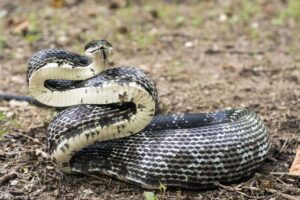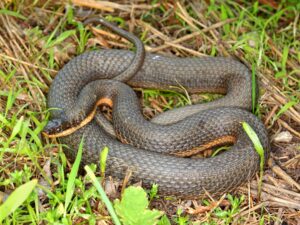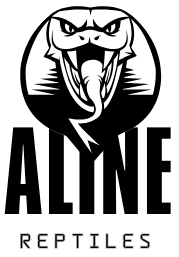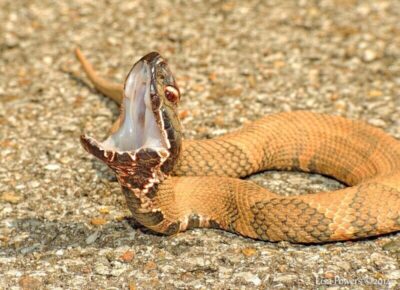Tennessee is home to a wide variety of wildlife, but one group that often sparks fear and fascination is snakes. Among the many species found in the state, only a few are venomous—or as many people mistakenly say, “poisonous snakes in Tennessee.”
Understanding the difference between venomous and non-venomous snakes, how to identify them, and what to do if you encounter one can make all the difference between a peaceful outdoor experience and a dangerous one.
This guide dives deep into everything you need to know about venomous snakes in Tennessee—from species identification to bite prevention and legal considerations.
Understanding the Difference: Poisonous vs. Venomous

First things first: let’s clear up a common misconception. While people often refer to dangerous snakes as “poisonous,” the correct term is venomous. Poison is something that’s harmful when ingested or touched, while venom is injected, usually through a bite or sting.
So, technically speaking, Tennessee has venomous snakes, not poisonous ones. But since “poisonous snakes in Tennessee” is the term most people use when searching, we’ll use both for clarity.
Venomous Snakes Found in Tennessee
There are four species of venomous snakes in Tennessee. Let’s take a closer look at each one, including how to identify them, where they live, and how dangerous they actually are.
1. Timber Rattlesnake
- Scientific Name: Crotalus horridus
- Average Length: 3-5 feet
- Habitat: Forested hillsides, rocky outcrops, and rural farmland
- Behavior: Generally shy and reclusive, will rattle when threatened
Timber rattlesnakes are probably the most iconic venomous snakes in the state. They are thick-bodied with dark bands and a distinctive rattle on their tail.
2. Pygmy Rattlesnake
- Scientific Name: Sistrurus miliarius
- Average Length: 1-2 feet
- Habitat: Wetlands, pine forests, and grassy areas
- Behavior: Rarely seen, cryptic coloring helps them blend in
Pygmy rattlesnakes are much smaller and quieter. Their rattles are so tiny that they can often go unnoticed.
3. Copperhead
- Scientific Name: Agkistrodon contortrix
- Average Length: 2-3 feet
- Habitat: Woodlands, rocky areas, and suburban neighborhoods
- Behavior: Relies on camouflage, often doesn’t move when approached
Copperheads have a beautiful hourglass pattern and are responsible for the majority of venomous snake bites in the state—mostly because people accidentally step on them.
4. Cottonmouth (Water Moccasin)
- Scientific Name: Agkistrodon piscivorus
- Average Length: 2-4 feet
- Habitat: Swamps, streams, lakes, and rivers
- Behavior: Will stand its ground and open its mouth in warning
Cottonmouths are often confused with harmless water snakes. When threatened, they display the white lining inside their mouths, which is where their name comes from.
Snake Identifcation Table
| Snake Species | Venomous? | Key Identifier | Typical Habitat |
|---|---|---|---|
| Timber Rattlesnake | Yes | Rattle, dark crossbands | Forested and rocky areas |
| Pygmy Rattlesnake | Yes | Small size, spotted pattern | Wetlands and pine forests |
| Copperhead | Yes | Hourglass markings | Woodlands and urban edges |
| Cottonmouth | Yes | White mouth, thick body | Aquatic environments |
| Eastern Garter Snake | No | Yellow stripes on dark body | Yards, gardens, fields |
Snakebite Safety and First Aid

Despite how scary they seem, venomous snakes rarely bite unless provoked. But if a bite happens, here’s what you should do:
Do:
- Stay calm and call 911 immediately
- Keep the bitten limb immobilized and below heart level
- Remove rings or tight clothing
- Get to a hospital as quickly as possible
Don’t:
- Don’t try to suck out the venom
- Don’t apply a tourniquet
- Don’t apply ice or alcohol
- Don’t attempt to catch or kill the snake for identification
Where You’re Most Likely to Encounter Venomous Snakes
Snakes tend to avoid human contact, but here are common spots to be cautious:
- Hiking Trails and Forests: Be mindful near logs, rocks, and tall grass
- Lakes and Streams: Especially in the western part of the state, cottonmouths are more common
- Suburban Gardens and Woodpiles: Copperheads love these areas
How to Identify a Venomous Snake (Even from a Distance)
Venomous snakes in Tennessee tend to share some characteristics:
- Triangular head: Venom glands make their heads wider than their necks
- Vertical pupils: Like a cat’s eye
- Heat-sensing pits: Located between the eyes and nostrils (in pit vipers)
- Thicker body: Compared to non-venomous snakes
However, don’t rely on just one feature—many harmless snakes can mimic these traits.
What to Do If You Encounter a Venomous Snake
Here are a few practical steps:
- Don’t panic: Back away slowly
- Do not attempt to kill it: Most bites happen when people try to handle snakes
- Give it space: Snakes don’t chase humans; they want to be left alone
Protecting Your Home and Yard
You can take several steps to discourage snakes from coming too close:
- Keep grass short
- Eliminate rodent populations
- Seal cracks in foundations and doors
- Remove brush piles and junk
- Use snake-proof fencing for gardens or coops
Legal and Conservation Aspects
In Tennessee, venomous snakes are protected under certain wildlife laws. It is illegal to kill or capture native snake species without proper permits.
Snakes play a vital role in the ecosystem by controlling pests like rodents. Killing them not only disrupts the balance of nature but may also result in a fine.
Common Myths About Venomous Snakes in Tennessee

Let’s bust some myths:
- Myth: Baby snakes are more dangerous.
- Truth: Their venom isn’t more potent, but they might be less controlled with their bites.
- Myth: Snakes chase people.
- Truth: They may slither in your direction to escape, not to attack.
- Myth: All snakes in water are cottonmouths.
- Truth: Most are harmless water snakes that pose no danger.
Outdoor Snake Safety Tips
Whether you’re hiking or gardening, here are some simple habits to adopt:
- Wear boots and long pants
- Use a flashlight at night
- Stick to trails
- Avoid placing hands or feet in unseen areas
Conclusion
Snakes are an essential part of Tennessee’s natural landscape, and while the idea of encountering one may seem frightening, knowledge truly is power. By learning to identify and respect venomous snakes, understanding where they live, and knowing what to do in case of a bite, you’re far more likely to coexist safely.
The phrase “poisonous snakes in Tennessee” might be common, but now you know the accurate facts, and you’re better prepared to stay safe and even appreciate these fascinating creatures from a respectful distance.

